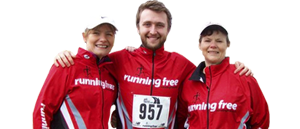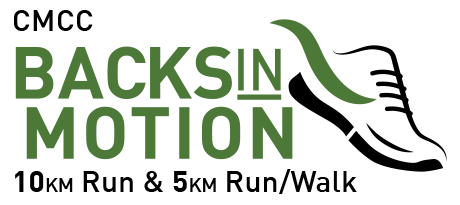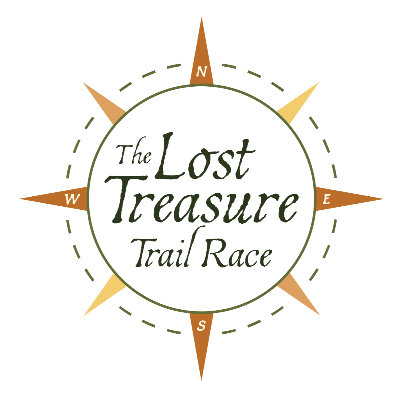A year ago, if you told me that I would be captaining a tandem bike in Clearwater with a blind guy on the back I would have laughed. How could one get themselves in such a position? Pretty easily it turns out.
Through a variety of circumstances, and the magic of social networking, I met an interesting guy who was attempting to continue his triathlon career despite being unable to see well enough to get himself around a racecourse safely. After a few general requests for help on his part and, some may say foolish, replies on mine, I was now a guide for a blind guy. (Sorry, I probably should say visually impaired, but someone needs to keep his ego in check.)
Many people know Ryan Van Praet through his tireless efforts to raise funds for the fight on ALS. This is actually how I met him. Only later finding out through an article in Triathlon Canada that he was indeed fighting his own battle against retinitis pigmentosa. Basically this means he has lost most of his peripheral vision, and is slowly losing all of his sight. As he puts it, his retina is turning into Swiss cheese.
Now, I hadn’t met, never mind guided, a visually impaired athlete before. So this was entirely new territory for me. Quite honestly it was a little scary, especially when I started to really think about the logistics of getting the two of us around a course safely. How will we swim together? What are differences in riding a tandem bike? How do we not get in other athletes ways? Needless to say google got quite a workout from me.
As it turns out, it isn’t too hard, just a different mindset.
Our first workout was a 70km bike ride in the Niagara Region. Ryan had just got his custom tandem built and was excited to give it a real workout.
Riding a tandem is all about communication. From start to stop, you must communicate. Now this is tough for someone who has never had to vocalize that he wanted to coast while pedaling before. Years of ingrained habits had to be erased.
The first step is getting rolling. We adopted a straight forward one-two-three-go method. Which seems to work. Since the tandem is so long it wobbles quite a lot at slow speeds. Once you are moving it is rock solid, but the first few strokes can be interesting. Next the captain (person steering) and stoker (person on back) both need to clip in their other foot. So a coast is necessary. Again, it is all about talking to one another. If he needs to take a drink, he needs to tell me. In the longer races we have learned to stand up together to give our butts a break. The tandem is a harsh ride.
So that was my first experience as a guide. Now, smart people would choose a nice small race for their first venture into such unknown territory. As we are both experienced Ironmen, why not do a measly half Ironman!
Peterborough here we come.
At the start line of the Peterborough half Ironman we had never swam together or run together. No big deal!
So how do we get around the swim course as a team? Well, It is with a 4-foot tether.
Ryan rigged up a bungee cord so that it goes around our waists. During the swim we actually slide it down to mid thigh to avoid hitting it during our stroke.
As this was our first race, we placed ourselves conservatively near the middle of the pack so we wouldn’t get in anyone’s way. We were mostly concerned that someone might get caught up in the tether.
What I found during the swim is that I ended up being more of a body guard for Ryan than anything else. I made sure no one got in between us and that Ryan had a clear line around the buoys. If he got off course he would feel the tension on the tether build and correct accordingly. I definitely recommend that if you are guiding a blind athlete, make sure you are a stronger swimmer than them, since you will be using a fair amount more energy keeping them on track and safe. In Clearwater we got our tether caught around an anchor buoy that I couldn’t see (as it was the same size as a head!). I had to stay calm and get untangled and start back up again. It’s these little things that guiding is all about.
Once out of the water things are pretty normal. In T1, it is my responsibility to get myself ready, and to make sure that he has everything he needs within reach. My transition needs to be quick, so that I can help him.
The bike is interesting for us, as this is the one sport that I can actually contribute to our overall speed. Many people make the assumption that the two of us together should go much faster than a single person. This really isn’t the case. Our top speed is most likely a little faster, but because of the clumsiness of maneuvering a tandem in tight situations and turns, our bike split is similar to that of a top AG triathlete.
During the race, communication amongst other athletes is really important as well. In the New York City triathlon this year I went hoarse yelling “On your left” as we had to pass so many people, and it is a lot tougher to slow down or change direction quickly on the tandem. As well on the run I sometimes need to tell people that we are running together so that they can give us enough space to pass.
T2 is similar to T1. Make sure he has all of his gear, change quick and put the tether back on.
Ryan’s vision right now is good enough for him to run on open roads safely. However, if he runs into a shadow the lights go out for him. I need to be really conscious of this especially on tight tree lined courses.
Since his peripheral vision is shot, I need to warn him about roots, bumps, pot holes, dips in the road and most importantly groin highs (objects like posts that are 2-3feet high). The run is were things get a little more interesting. I generally run directly beside him and even though we are tethered we are usually less than arms reach from each other. Hence we have coined another term. To guide a blind athlete you need to endure a lot of “sweaty man (or woman) touching”.
In addition to leading him around the course I also help with his pacing. I give him splits, and help him met out his effort.
One thing that I learned this year as well was that there are many different styles of racing out there. I generally err on the conservative side, building my effort on each leg of a triathlon, whereas Ryan heads out of transition at full speed. We have both had to adapt so as not to affect our overall time. It has truly become a team effort.
Finally, to guide a visually impaired athlete you need to be comfortable being stared at. The amount of attention he receives at these venues is unreal.
At the Clearwater 70.3 championships, not only was he being interviewed for the NBC broadcast, he was also at the pro press conference. Pretty much everyone knew who he was, and what we were doing. Walking through the expo was an experience. People were constantly snapping pics of the bike and of us. Stopping to chat with Ryan and give us their support. It really was an amazing experience.
What a year it has been. Racing in NYC at the Paratriathlon National Champs and at Clearwater 70.3. Most importantly finding a new friendship with Ryan and his wife Mindy who are truly great people. One small facebook post later and I have a whole new, and different, set of experiences than I ever thought possible.
What is really exciting is where it is going. Ryan has signed up for Lake Placid, and is also hoping to go to the ITU Worlds in Budapest with the goal of becoming the fastest visually impaired triathlete in the world. He also has unfinished business in KONA which I am sure he will take care of in the not too distant future.
Never be afraid to try something different. Athletes such as Ryan with Physical Impairments do this everyday. Spending time with someone like him really opens up your eyes as to what is really important. I have been lucky to have the opportunity to be part of his continued journey in this sport, and hopefully will race with him well into the future.





















Truly AMAZING Syd! Wow I am blown away and inspired to help others that may be in need of something like this.